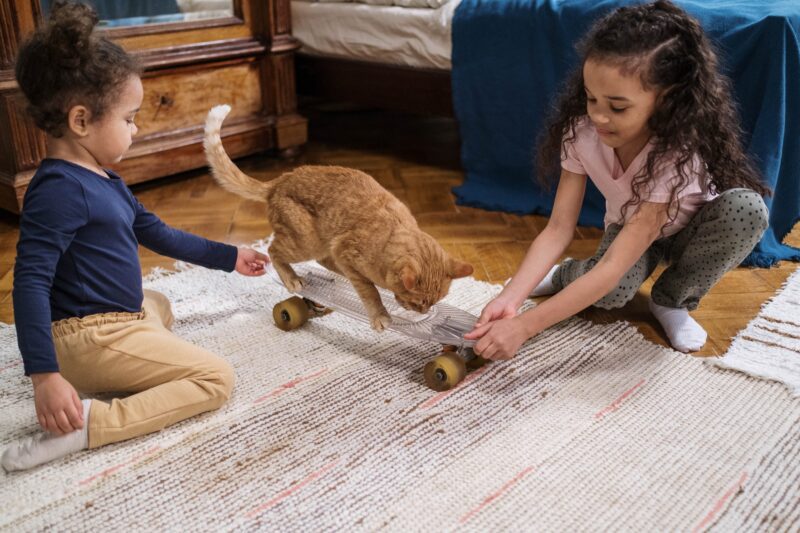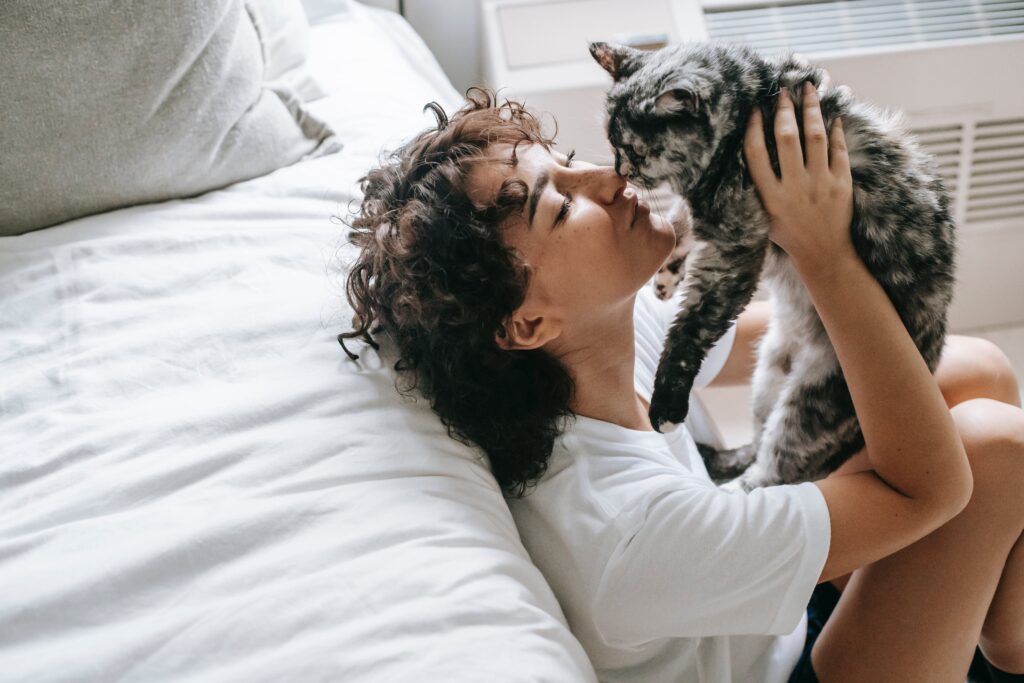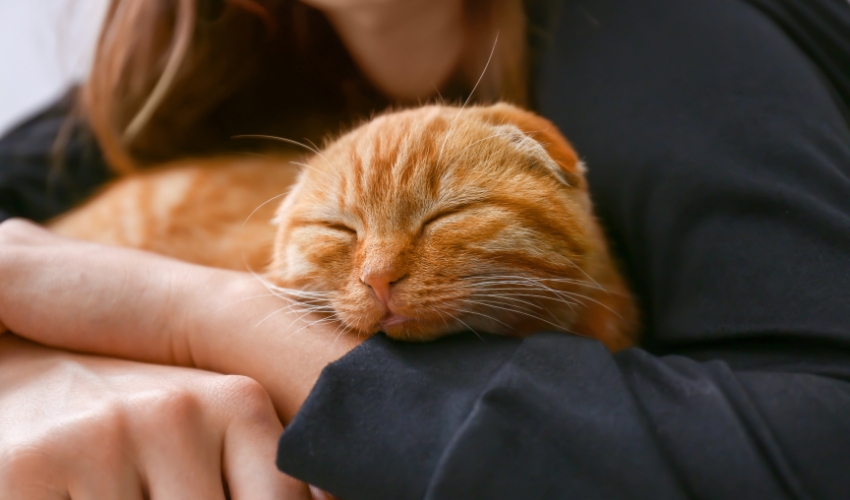Cats, with their enigmatic personalities and graceful movements, have long captivated the hearts of humans. Yet, decoding their subtle cues and gestures can sometimes feel like unraveling a mystery.
As devoted cat owners, understanding our feline companions’ body language is paramount to providing them with the care and attention they deserve. From the flick of a tail to the position of their ears, every movement speaks volumes about a cat’s state of mind. By learning to decipher these signals, we can forge a deeper connection with our cats and ensure their physical and emotional health. In this guide, we embark on a journey into the world of feline body language, exploring the intricate signals that cats use to communicate their emotions, needs, and overall well-being.
Understanding Your Feline’s Body Language
Visual Cues:
One of the primary ways cats communicate is through visual cues, which can provide valuable insights into their mood, intentions and overall well-being. Here are some key visual cues that will help you interpret your feline’s body language more effectively:
- Tail Position – A cat’s tail position is one of the most expressive parts of their body. A relaxed and gently swaying tail usually indicates contentment, while a raised tail with a slight curve at the end signifies a friendly greeting. However, a puffed-up or bristled tail may indicate fear or aggression, while a tucked tail suggests submission or anxiety.
- Ear Position – Forward-facing ears usually indicate curiosity or attentiveness, while flattened or pinned-back ears may suggest fear, aggression, or anxiety. One ear forward and one ear back may indicate uncertainty or caution.
- Eyes – Cats’ eyes can show a wide range of emotions. Relaxed, half-closed eyes often indicate a feeling of contentment or relaxation, while wide-open eyes with dilated pupils may indicate excitement, fear, or aggression. Dilated or narrowed pupils can also indicate excitement or aggression. Slow blinking or what we call “cat kisses” is a sign of trust and affection, as cats often blink slowly at humans they feel comfortable with.
- Whisker Position – When a cat feels relaxed, their whiskers are typically positioned forward. However, whiskers pulled back against the face may indicate fear or aggression, while whiskers spread wide may suggest excitement or agitation.
- Body Posture – A cat’s overall body posture can reveal a lot about how they’re feeling. A relaxed and loose body posture with their weight evenly distributed indicates contentment and relaxation. A tense or hunched posture with their body low to the ground may signal fear or aggression. Arched backs and raised fur indicate that the cat feels threatened or defensive.
Vocalization:
Cats use vocalization to communicate a variety of emotions and needs. It is essential in their way of communication. Normal vocalizations include contented purring and gentle meows or chirps. However, excessive or unusual vocalizations, such as continuous yowling or aggressive growling, may signal distress or discomfort. Here are some common vocalizations and what the meanings they perceive in cat’s body language:
- Meowing – It is perhaps the most familiar vocalization cats use to communicate with humans. Cats meow for various reasons, such as seeking for attention, expressing their hunger, greeting their owners, or indicating that they are feeling discomfort. The tone, pitch, and duration of the meow can provide clues about the cat’s underlying emotions.
- Purring – Purring is often associated with contentment and relaxation in cats. Cats purr when they are feeling comfortable, happy, or relaxed, such as when they’re being petted by their owner. However aside from feeling happy or relaxed, cats may also purr when they’re in pain or distress as a self-soothing mechanism.
- Chattering – Some cats produce chattering sounds, especially when they’re observing birds or small prey through a window. This behavior is thought to be an instinctive hunting behavior, as cats mimic the sounds of their prey to practice their natural hunting skills.
- Hissing – Hissing is a defensive vocalization cats use to express fear, or discomfort. Cats may hiss when they feel threatened or provoked by another animal or person. It serves as a warning signal to deter potential threats and establish boundaries.
- Growling or Snarling – Growling and snarling are aggressive vocalizations that cats use to express their anger, hostility, or territoriality. Cats may growl or snarl when they feel threatened, challenged by another animal or when defending their territory or resources.
- Excessive Vocalization – Our felines may engage in excessive vocalization, such as meowing or yowling excessively, it may be a sign of boredom, anxiety, or medical issues. Excessive vocalization can be a cry for attention or a way of expressing discomfort or distress.

Body Movements:
Observing your cat’s body movements can provide insights into their mood and comfort level. Playful behavior, such as pouncing and chasing toys, indicates a happy and stimulated cat. On the other hand, signs of discomfort or pain, such as limping or hiding, may indicate underlying health issues that require attention. It is recommended that you reach out to your veterinarian if you notice any signs of pain or discomfort that your feline is showing.
Interaction with Humans and Other Animals:
A healthy cat will exhibit affectionate behavior towards their human companions, including head butting, rubbing against you, and kneading or “making biscuits” with their paws. They may also engage in friendly interactions with other pets in the household. However, aggressive or defensive behavior towards humans or animals may indicate that your feline is experiencing stress or discomfort.
Grooming Habits:
Cats are meticulous groomers, and a healthy cat will maintain a regular grooming routine. Clean, well-groomed fur and healthy skin and coat condition are signs of good overall health. However, excessive grooming or lack of grooming may indicate underlying issues, such as skin irritation.
Understanding your cat’s body language is important in building a strong bond and providing optimal care for your feline. By observing their visual cues, vocalizations, body movements, interaction with humans and other animals, and grooming habits, you can gain valuable insights into their emotional and physical well-being. Paying attention to these signs allows you to proactively address any health concerns and ensure your feline friend remains happy and healthy for years to come.












